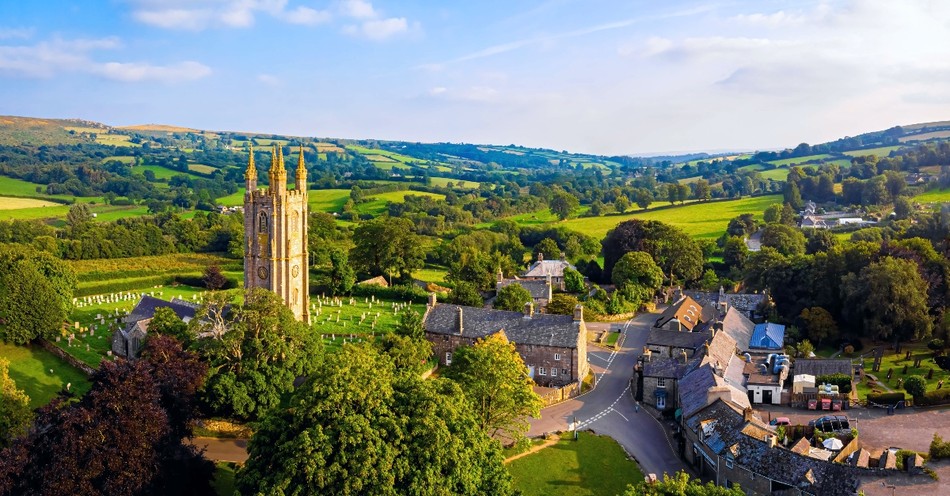In the summer of 2022, England recorded some of its hottest days, peaking at 104 F (40 C). We are not prepared for or used to such heat in this country, and it endured for about eight weeks.
Our beautiful countryside was absolutely parched towards the end of the exceptionally dry spell, drier than I have ever known.
The grass lay flattened like scorched dry straw, and trees hung limp and dusty. Rivers dried up, sleep was hard to find at night, and tempers were frazzled.
Then finally rain, five hours of heavy fall. It was glorious. My walk in the park that morning was wonderful. Everything smelled fresh after the rain, and there was a sense of renewal and new beginnings.
After just a few days, bright blades of grass started to appear strikingly against the drab, seemingly dead lawn. After four or five days, patches of dazzling green shone through. A third of the lawn was ablaze within a week with brilliant emerald-green life.
The oak, beech, ash, and sycamore trees had all been limp and dusty and quickly sprang into life again with plumped-up, shiny, vivid green leaves and sparkling berries and fruits.
Watching the transformation over a short time from dry, dead, and dull — to hope, life, and glory was quite magical.
How Creation Reveals God
It stirred up something in me to do with how, through Jesus, we can all be renewed and brought back to life. I felt that it echoed the life-giving power of the gospel teachings.
This, in turn, made me think of how the natural world reflects the very essence of God's character. So, I would like to share some more ways I find God revealing himself in the natural world.
1. Orderly God. I have always marveled at the cyclical nature of God's creation, with no beginning or end. We can see this in the larger picture of the whole universe with the individual galaxies, right down to our own galaxy and the planets revolving around the sun. Then we have the regular patterns of the times, season — night, and day.
The life-giving water cycle evaporates up from the seas and into the clouds; then returns in the rain, running down into the streams, and rivers, back into the sea again, which flows back and forth with the moon's pull.
We can also observe the cyclical nature of God in all his creatures. Based on a similar framework of bones, respiratory systems, and organs, we are all conceived, born, grow into adults, reproduce (if called to), and eventually age and die.
2. Beautiful God. All of creation is suffused in God's beauty, revealing His character and nature. From the celestial wonder of the sky, both day and night; the majesty of the mountains and valleys; the abundant variety of life in the seas and rivers; to the beauty of the forests, woodlands, fields, and flowers — all can be gazed on in awe.
All God's creatures embody their own beauty as a mark of the Creator, and we humans, made in the image of God, carry our own unique beauty, which can be transmitted by love in action.
3. Tenacious God. Nothing is too large or too small in God's creation to demonstrate his character. Have you ever wondered how a small flower seeded itself in the crack of a pavement in a city centre or how tiny ants form armies that work together in great precision to preserve their colonies?
These are examples of how God is always close to us, even when the natural world is not obvious. God is tenacious in his longing to reach each of us with the majesty of His creation wherever we might be.
4. Loving God. God is love, and he imbues a spark of that love within the soul of each newborn baby. In an ideal world, love is automatically shared within families and communities to glorify the nature of God.
Today though, as we live in a fallen world, we must also rely on the lessons of Jesus to demonstrate perfect love and pass it on through our words and actions.
5. Powerful and providential God. This can be a hard lesson to accept as God has the power to bring forth both blessings and disasters through the natural world.
The Psalmist said, “The Lord does whatever pleases him, in the heavens and on the earth, in the seas and all their depths” (Psalm 135:6).
Seeing God in Creation
We were not born into a static world but one of many God-created movements. At times, this involves collisions and explosions. Because of this, our homes and communities are subject to earthquakes and water, wind, and fire. Also, diseases like the recent global pandemic can ravage countries, communities, and economies.
However, nature also reflects God's providence and healing power. For example, when a tree loses a limb in a storm, it immediately starts the healing process by attempting to seal the wound, as with humans when we see a cut in our skin miraculously repair itself within a short space of time.
Many of our medicines are derived from plant life, and health specialists increasingly recognize the physical and psychological benefits of spending time in nature, such as in forests and woodlands, by seas and rivers, and the Alps are particularly well-known for their health benefits. Nature mirrors the healing power of Jesus, whose teachings restore broken hearts and souls in time and for all eternity.
What Does This Mean?
We can see God’s loving and redemptive character reflected in so many different ways throughout nature.
Our Creator used words throughout the six days of creation to bring forth the various elements of our world. Then when he created humankind on the sixth day, he said, “Let us make mankind in our image,” this included the power of speech — a gift reserved for humans only.
Then God said, “I give you every seed-bearing plant on the face of the whole earth and every tree that has fruit with seed in it. They will be yours for food. And to all the beasts of the earth and all the birds in the sky and all the creatures that move along the ground — everything that has the breath of life in it — I give every green plant for food.” And it was so. God saw all that he had made, and it was very good. And there was evening, and there was morning — the sixth day (Genesis 1:29-31).
Today, God allows himself to be revealed to others through our conversations, and we can create or crush the reality of another by voicing our thoughts.
The wonderful thing is that if we choose to use gentle, inspired voices of comfort and encouragement, we can bring hope to parched souls desperate for hope — like the rain that saturated and revived the barren English countryside so quickly this summer.
So let us, in the small orbits of our lives, use beautiful, encouraging, and kind expressions of hope to shine a light on the orderliness, beauty, tenacity, power, and love of God's person as he reveals himself to us throughout the natural world.
Let us tell out the hope, to those whose souls are sapped, of a joyful everlasting life offered to all through the work and life of the son of God the Creator, Jesus.
For further reading:
What Happened on Each Day of Creation?
How Is God’s Majesty Seen in Creation?
Can Someone Be Saved by Just Seeing Creation?
What Is the Creation Story in the Bible?
Photo Credit: ©iStock/Getty Images Plus/Alexey_Fedoren


.jpg)

.jpg)
